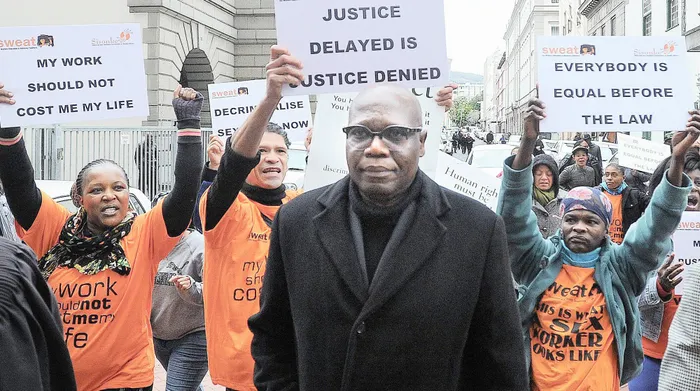Will galleries hang the work of a murderer?

Women protest as Zwelethu Mthethwa, charged with killing a prostitute, leaves Western Cape Town High Court in June 2015. Picture: Brenton Geach Women protest as Zwelethu Mthethwa, charged with killing a prostitute, leaves Western Cape Town High Court in June 2015. Picture: Brenton Geach
Life and art are not so readily separable, it seems - not, at any rate, when gallerists and curators are asked to choose between an artist who murdered a woman, and his internationally acclaimed art.
It also seems likely among some art buyers and sellers, the aesthetic virtues of Zwelethu Mthethwa’s output will override moral misgivings.
Even so, in an environment of continuing, often casual male brutality towards women, Mthethwa’s conviction for the murder of Nokuphila Kumalo - who, died of blunt force injuries to the head, and whose liver was “torn in half” by the impact of the assault - has coloured his art.
The painter and photographer, credited with more than 30 solo exhibitions in, among other places, the US, France, Germany, Switzerland, Italy and Spain, has become, in some quarters at least, untouchable.
Charles Shields, director of the prestigious Everard Read Gallery, commented: “I would not be in a hurry to sell his works, quite frankly.”
He added: “Perhaps if he displayed remorse, and experienced some kind of epiphany and was able to make works that advocated against violence of the kind he displayed, there could well be more interest, but whether it would have commercial value I do not know.
A Woodstock gallerist, who spoke on condition of anonymity, said the question of viewing art in the light of the artist’s life was “subjective”.
“Some will appreciate the work for what it is, not in the light of the creator’s history.”
He offered as an example a recent overseas client “who knew all about (Mthethwa’s murder case), but admired the work, and was completely unaffected by the knowledge of the crime. To him, he was simply appreciating the work.”
But, like Shields, Charl Bezuidenhout of WorldArt gallery in central Cape Town felt the artist and his work were inevitably inseparable.
He said: “I have a very strong view. Who would want to own a work by someone who murdered a woman? Who would want to celebrate that? So, as a private gallery owner, I think there should be no value in the art now.”
Arts writer Atiyyah Khan wrote in November 2014 that the “murder charges against acclaimed artist Zwelethu Mthethwa have not dampened appreciation of his work - his painting Good Times achieved a higher than expected price at a Strauss and Co auction in Johannesburg”.
The auction happened to be on the day of Mthethwa’s first appearance in the Western Cape Town High Court on the allegation that, in April 2013, he bludgeoned “23-year-old prostitute Nokuphila Kumalo” to death.
Good Times, Khan wrote, “sold to an unnamed South African buyer for R136 416. The work was expected to fetch between R80 000 and R120 000.”
Weekend Argus asked Strauss & Co for comment, but no response was forthcoming.
Before his death in 2015, the doyen of art dealers Stefan Welz compared Mthethwa to Herman Charles Bosman, who spent four years in jail for murdering his stepbrother.
Perhaps in time to come, no doubt tragically, Nokuphila Kumalo’s fate will be forgotten, and Mthethwa’s legacy will remain. This could mean that art and life will alwaysbe viewed separately, or differently.
In Mthethwa’s case, however, it is obvious the link will not be easily overlooked. Only last year, the National Gallery in the Company's Garden faced a furore over including one of the artist’s works - a photograph of an unnamed black woman - in its exhibition, Our Lady, a historical overview of representations of women in art.
Sex Worker Education and Advocacy Task Force activists protested outside the museum, and six female artists demanded their work be removed from the show.
The museum welcomed the reactions but the protests also underscored the link between art and its creators.